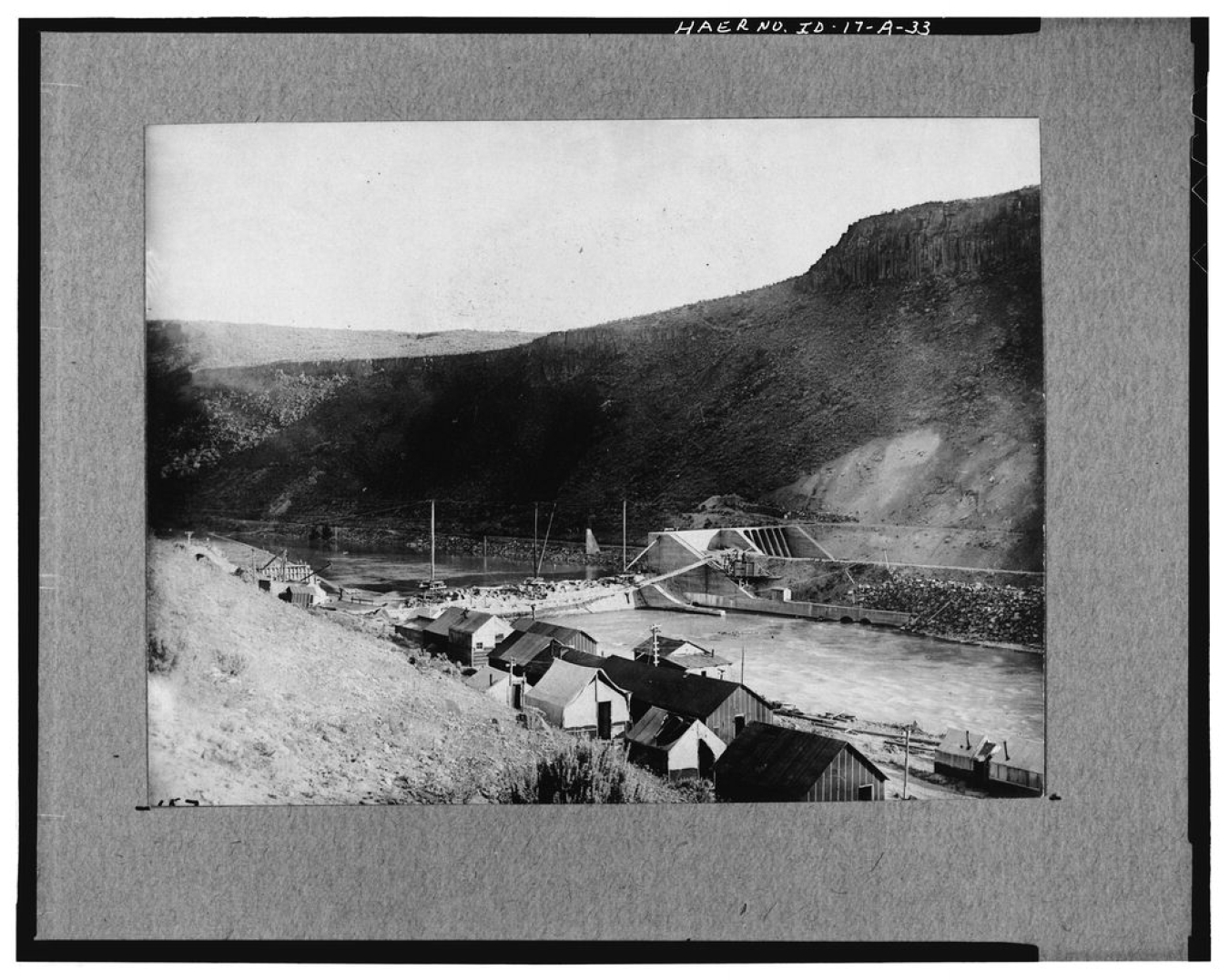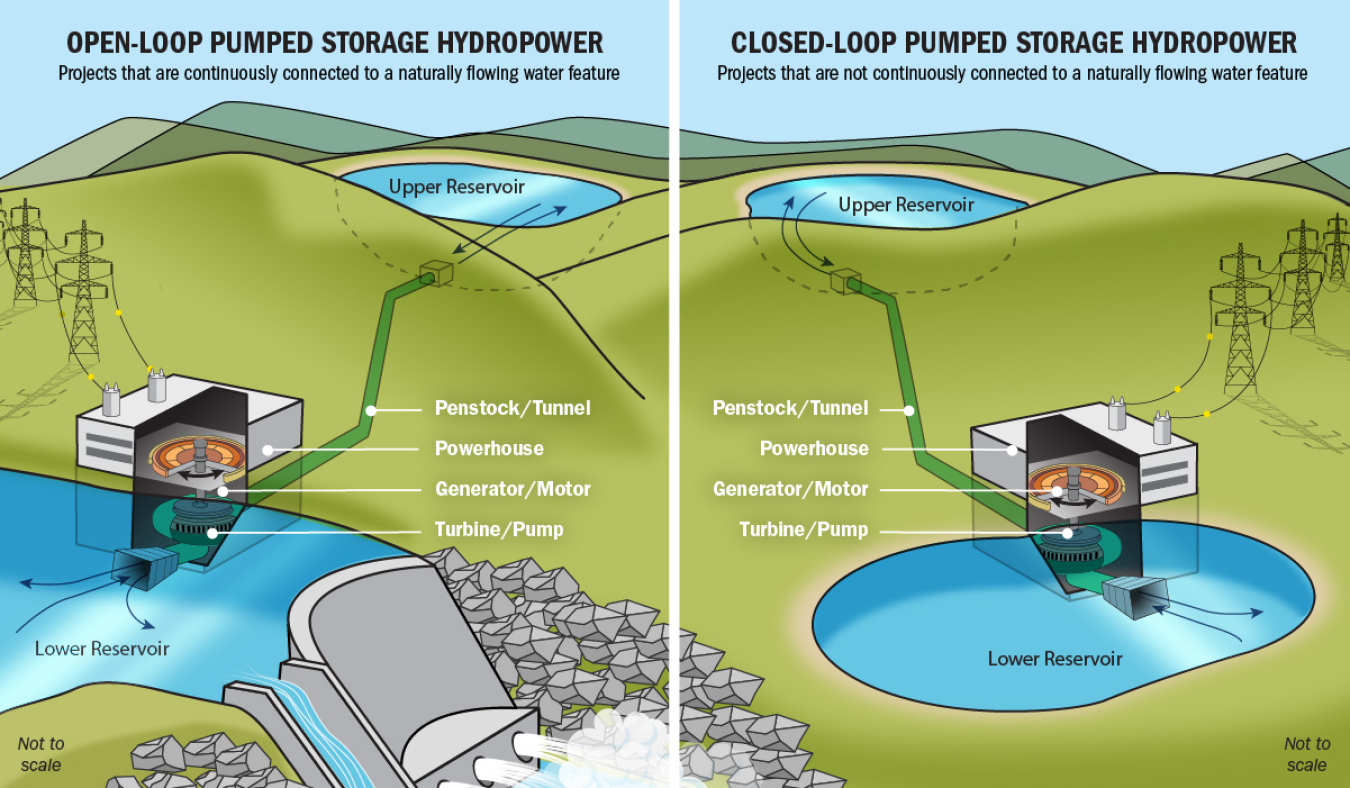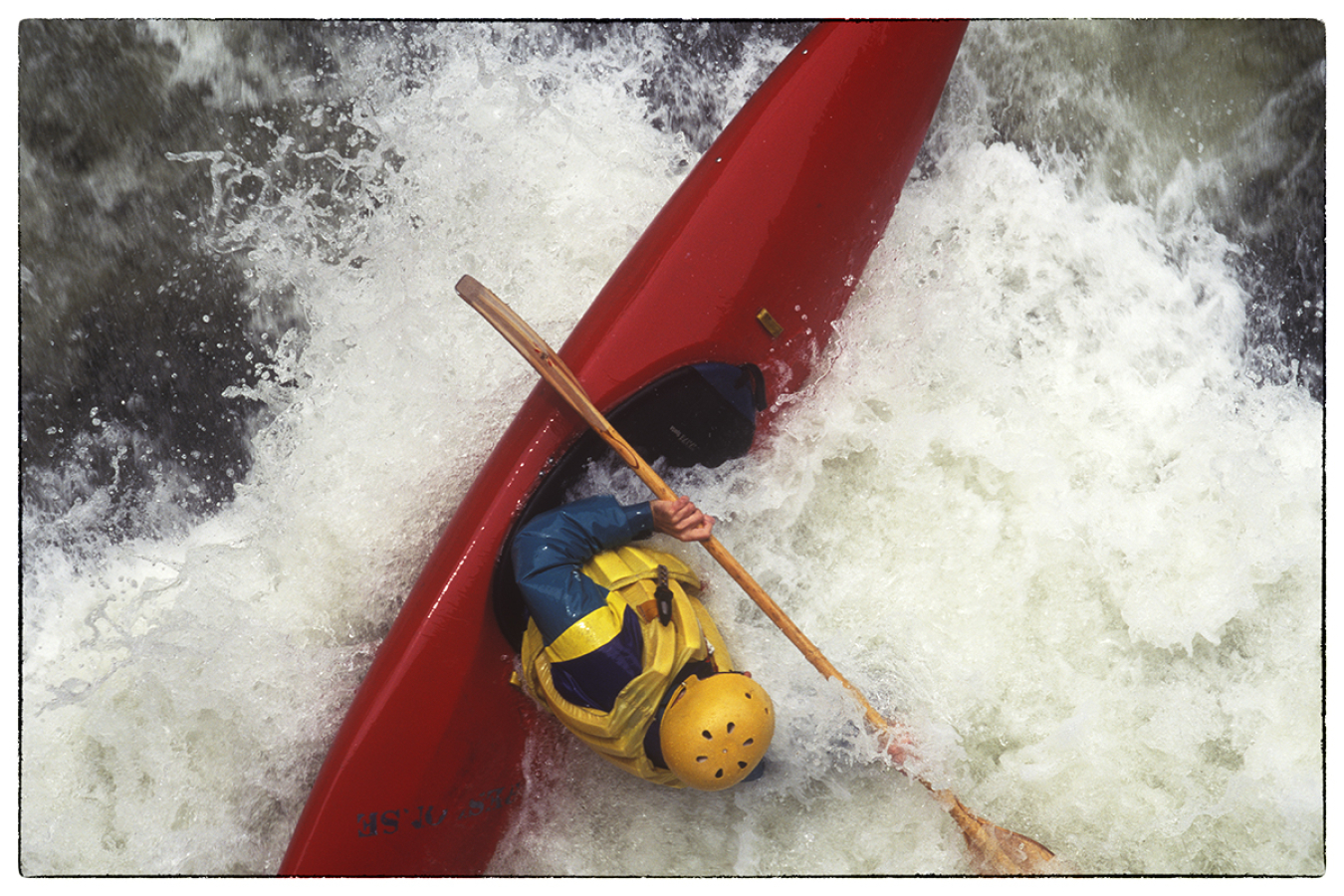Hydropower plants produce energy using the elevation difference created by a dam or diversion structure. Water flows in one side and exits at a lower point, which spins a turbine that runs a generator. Learn six things about hydropower’s potential.
Water Power Technologies Office
September 15, 2022
In 1908, builders worked to construct a hydropower facility to provide the Boise River, Idaho, region with much-needed water and electricity. Today’s hydropower plants might look a little different, but they come with even more benefits.
When writer Mary Hallock Foote trekked from New York City to Boise, Idaho, in the 1880s, she was disappointed to find “thousands of acres of desert empty of history.”
Not long after, Mary’s husband, Arthur DeWint Foote, started a project: a canal, diverted from the Idaho River, to carry water to power mills, irrigate farm lands, and hydraulically mine gold. The Footes soon moved farther west. But the U.S. Reclamation Service purchased the canal and its water rights and subsequently built the Boise River Diversion Powerplant, which began operation in 1912.
The project was a boon for farmers in the early 1900s and even today, thanks to upgrades with modern equipment. And while future hydropower projects will provide electricity and irrigation just like those that fueled 19th and early 20th century economic growth in the U.S. West, they look very different from what the Footes envisioned.
With smaller (or even micro-sized) hydropower systems that are safer for ecosystems and wildlife and offer many benefits beyond just renewable electricity, the next century of hydropower growth could, once again, help build a better tomorrow.
Here's six things to know about hydropower’s incredible promise:
How Does Hydropower Work?
Hydropower plants—big and small—produce renewable energy using the elevation difference created by a dam or diversion structure. Water flows in one side and exits at a lower point, spinning a turbine, which runs a generator and produces electricity.
These systems can be tiny (or even micro-sized), creating energy using flowing water in irrigation systems or on private property. Some modern hydropower facilities divert part of a river through a separate channel, and these diversion facilities may not require the use of a dam. These modern facilities are just a few examples of how the hydropower industry continues to innovate to support a clean electricity grid.
What Are Some of the Benefits of Hydropower?
Hydropower provides 31.5% of the country’s renewable electricity (and 6.3% of its total electricity). Nearly every state uses it. The oldest form of renewable energy, hydropower is also affordable and can provide a renewable, sustainable, and reliable way to power American communities.
Because hydropower plants can provide power to the grid almost immediately, they can also serve as a dependable backup during major electricity outages or disruptions. And, as the U.S. power grid evolves to incorporate more variable renewable energy sources, like solar power and wind energy, hydropower will play a key role in ensuring the grid remains reliable and stable.
What Are Some of the Challenges Hydropower Faces?
More than a century after the Footes jump-started the Boise River Diversion Powerplant, hydropower still has huge untapped potential and opportunity for growth. Many older facilities, for example, need upgrades to become more efficient or to integrate seamlessly with other renewable energy sources. To help make these upgrades, the Bipartisan Infrastructure Law invests more than $700 million in existing hydropower facilities to improve efficiency, maintain dam safety, reduce environmental impacts, and ensure generators continue to provide renewable electricity.
And, because rivers are highways for migratory fish (like salmon, sturgeon, and eels) and provide rich sediment needed to build nutrient-dense ecosystems downstream, WPTO is funding work to ensure hydropower facilities provide safe passage for fish. For example, with support from WPTO, Natel Energy recently conducted a study with Pacific Northwest National Laboratory and found more than 99% of fish were able to safely pass through its fish-friendly turbine.
Can Hydropower Be a Big Source of Energy Storage?
Yes! Pumped storage hydropower facilities can store energy for use during periods of high energy demand or even to help recover from power outages. With more variable renewable energy sources coming on the grid, energy storage is more critical than ever before. Pumped storage hydropower already accounts for 93% of utility-scale energy storage, and it’s growing at a fast—and necessary—rate. Over the past decade, pumped storage capacity in the United States grew by almost as much as all other types of energy storage combined, mostly due to upgrades at existing plants. As the grid evolves, these technologies can help ensure power is available when Americans need it.

Can Hydropower Do More Than Create and Store Energy?
Absolutely. Hydropower might be a huge source of renewable energy, but it can also support irrigation for farmers and help communities manage their water supplies and dampen the impacts of droughts and floods. As the climate crisis causes more frequent and extreme droughts and floods—both of which can impact food and fresh water supplies—hydropower facilities can store or help manage excess water to support communities’ efforts to fight these impacts.
Hydropower facilities can also help support flood control, and nearly 700 U.S. plants have reservoirs that offer some form of recreation, including swimming, boating, fishing, camping, hiking, and even whitewater rafting.

Nearly 700 U.S. hydropower facilities offer a vast range of recreational activities. Here, a kayaker takes advantage of the spillway below the Ocoee Hydropower Dam in Tennessee.
What Does the Future of Hydropower Look Like?
By 2050, U.S. hydropower capacity could grow by about 50%, increasing to 150 gigawatts. That much renewable energy could power more than 35 million average U.S. homes, save $200 billion from avoided greenhouse gas emissions, and require a workforce of nearly 200,000 people in hydropower-related jobs. Part of that capacity will come from adding power to dams that do not currently have power-generating infrastructure. (In fact, less than 3% of the nation’s more than 90,000 dams produce power.)
For American communities and families, the next generation of hydropower facilities might look a little different from the Boise River Diversion Powerplant, but they’ll still make history. These renewable energy facilities will help achieve the clean energy future the country needs.
Check out WPTO’s Hydropower Basics page for more information on this incredible renewable energy resource.
And stay up to date with WPTO’s latest hydropower funding opportunities, events, and news by subscribing to the monthly Hydro Headlines and the bimonthly Water Wire newsletters.

